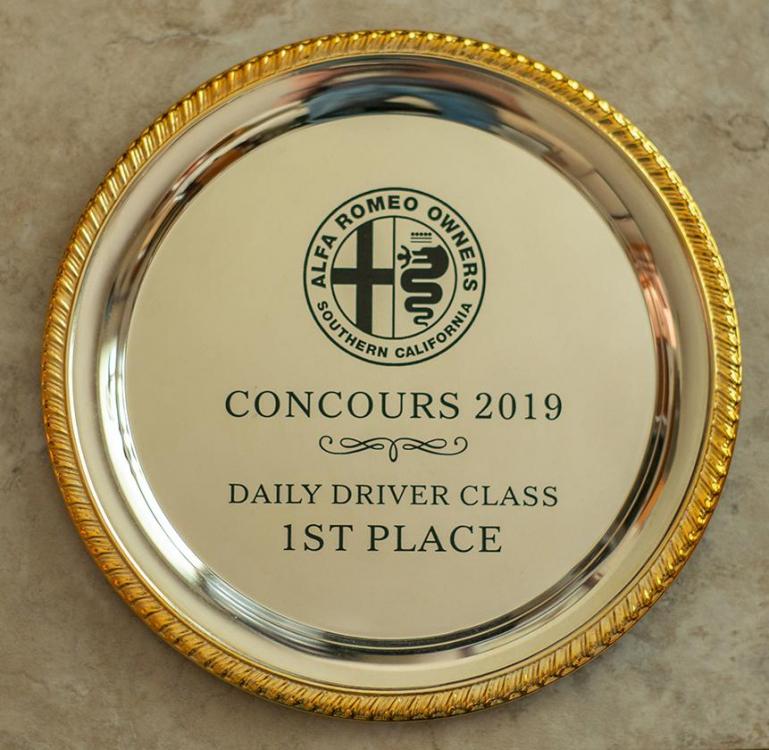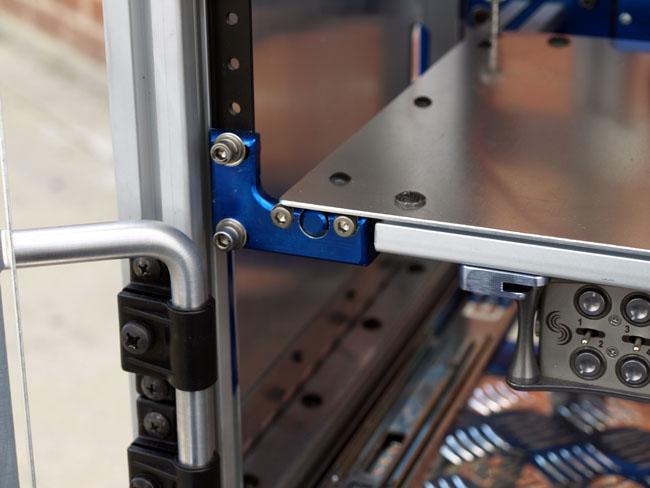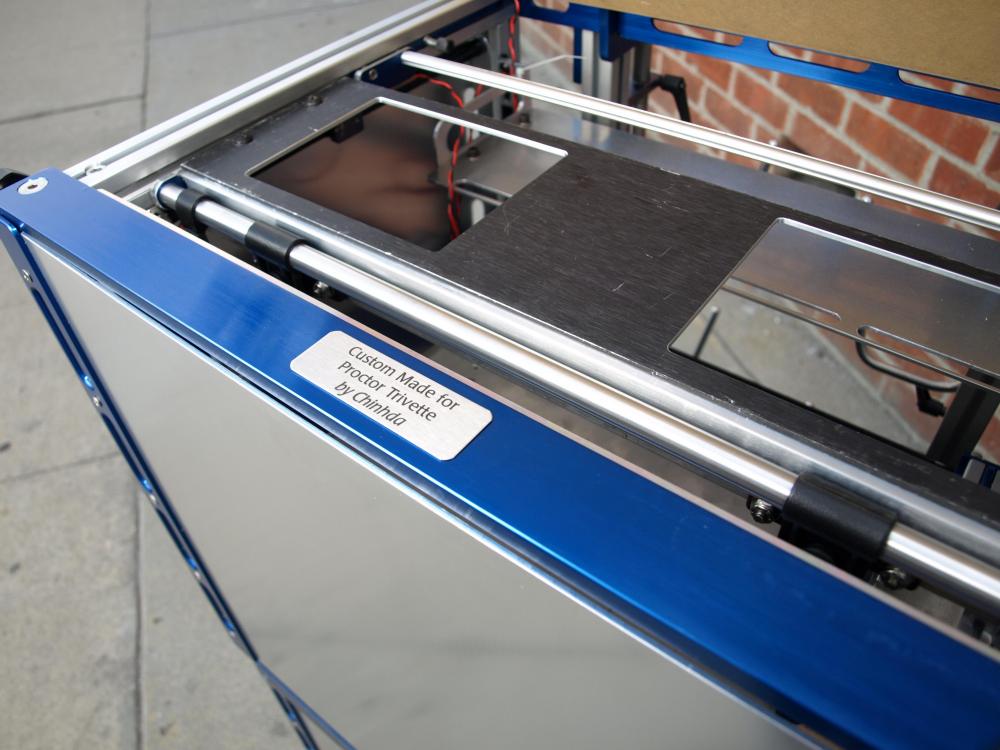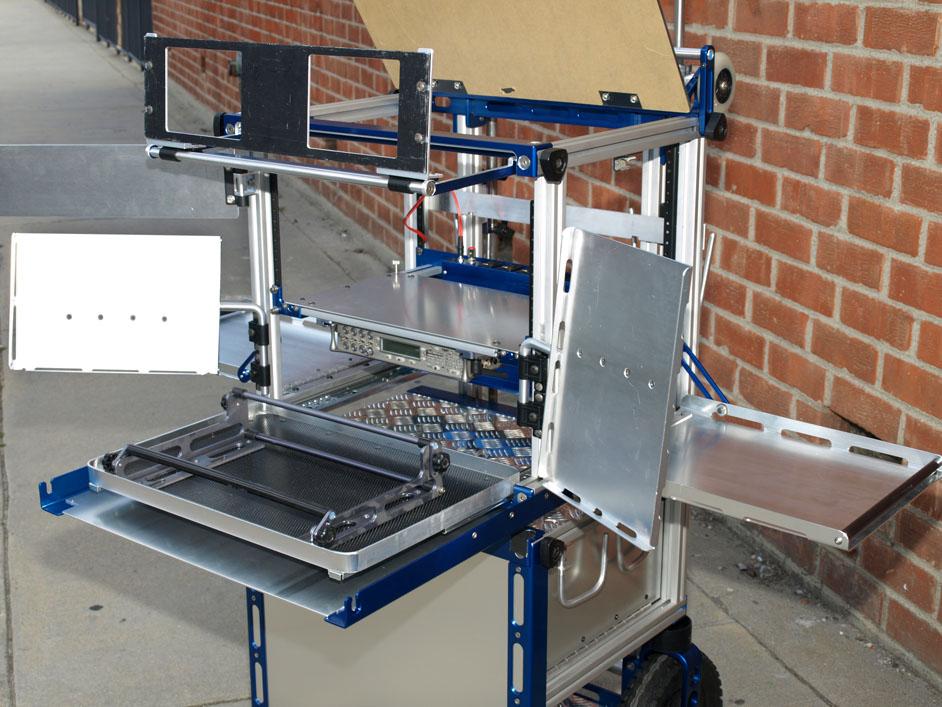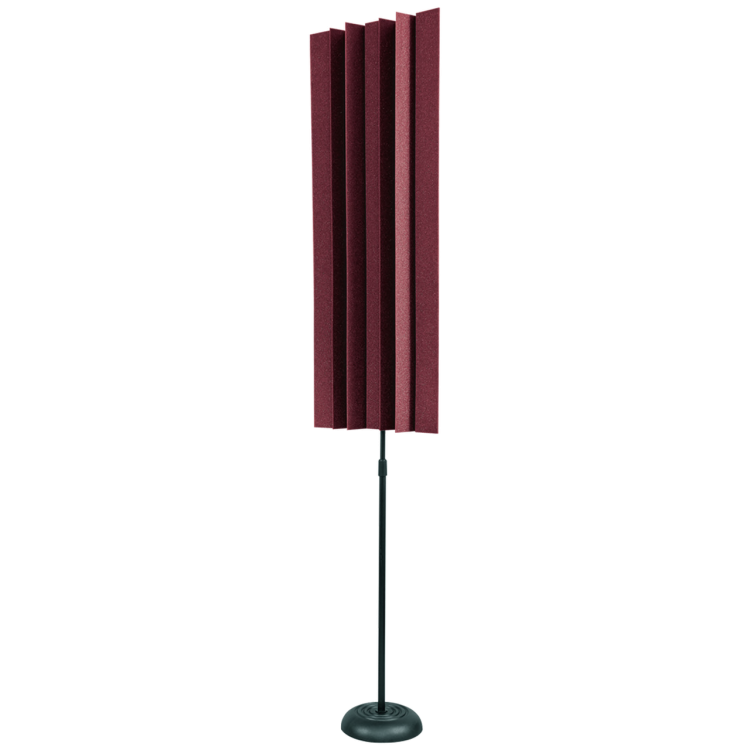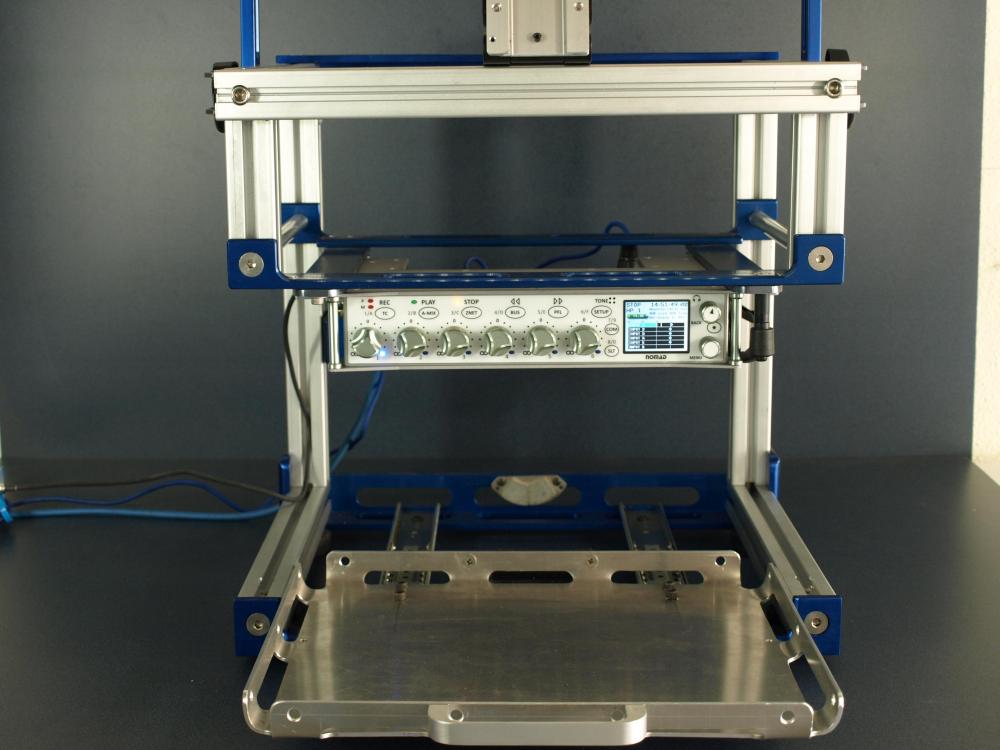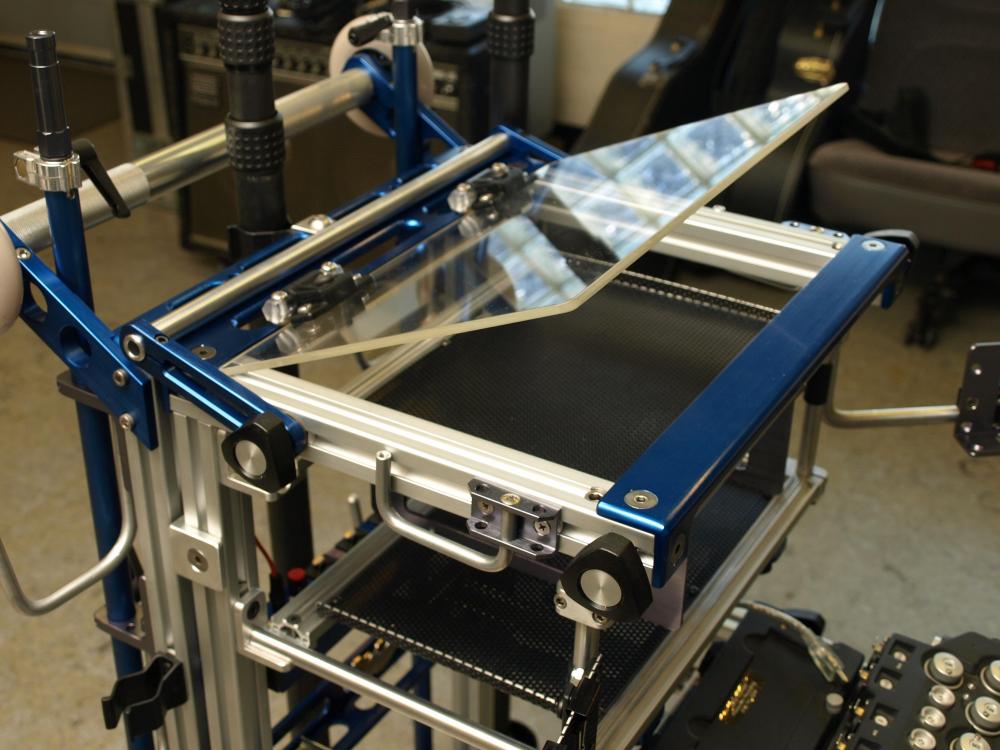-
Posts
1,458 -
Joined
-
Last visited
-
Days Won
19
Content Type
Forums
Gallery
Store
Everything posted by David Waelder
-

Project Car Owners With A Sound Mixing Problem
David Waelder replied to codyman's topic in The Daily Journal
That is a very sweet ride. I had a '73 B-GT for fourteen years. I bought it new in Boston (Waltham), drove it west in 1978 and finally replaced it in 1987. It was one of the last years with dual SU carburetors and I still have the Unisyn in my tool kit. David -

Project Car Owners With A Sound Mixing Problem
David Waelder replied to codyman's topic in The Daily Journal
It is an affliction; I'd probably be a rich man if it weren't for the cars. But I'm happy in the grips of my disease and a member of the Southern California Alfa Romeo Club, often referred to as a drinking club with a car problem. I acquired Orsini, the 1991 Spider Veloce pictured here, in 2015. I am the third owner. Ron, from South Carolina, used it as his daily driver and put nearly 100,000 miles on it over ten years. Andy acquired it then, drove it up to Long Island, and used it for pleasure. He added just over 10,000 miles, rebuilt the transmission, replaced the top and rebuilt the suspension with performance springs and Bilstein shocks. I bought it online and had it shipped to California. It needed some work when it arrived. The interior was shabby, especially the seats; there were scratches all over; the tires looked good but were ten years old; the water pump was leaking; the wheels showed considerable road rash and the engine burned oil excessively. Andy Terani at Empower Auto attended to the water pump and introduced me to Tiguan at Burbank Auto Upholstery. Tiguan is an artist in leather and vinyl. He used the existing seat cushions as templates to make a pattern and he hand-cut material to match the Alfa design exactly, vinyl on the sides and leather on the seating surfaces. I had the finish completely wet sanded and polished out by a local body shop and Andre's Custom Wheel Refinishing restored the wheels. The lacquer paint is original. Vittorio and Onofrio DeLeonidas at Alfa Italia rebuilt the engine, performing a complete valve job. They also replaced the rings and polished the liners. The engine is now tight with minimal oil consumption. Vittorio also installed new door panels. When a set of Commemorative Edition wood trim became available, I ripped out the faux wood and had Vittorio install the genuine product. (I think it's genuine wood but I'm certain it's genuine Pininfarina and authentic Alfa Romeo.) Installing an Alpine radio to replace the Panasonic unit previously fitted is the most recent refinement. The Alpine is a good match to the original and is period correct. It's a much loved auto that draws admiring comment whenever it is taken out. -
It's not clear from your inquiry what the objective is. Obviously you wish to improve the quality of recorded sound, primarily voices I assume, but to what purpose exactly? Would this be to achieve a documentary record that would preserve the content of the speech? Or, perhaps, to preserve the content at quality levels that make it easy for the listener discern words without fatigue? Or, perhaps, to yield quality that might be suitable for incorporating the results into a promotional film? As the expectation rises toward mellifluous tone, greater and greater effort is necessary to accomplish the goal. Assuming you seek to have good tone from the researchers so the listener doesn't need to strain to hear, I would recommend that you choose a microphone from your list of candidates and mount it so that it is about one meter closer to the subject than your camera lens. A good audio shop should be able to help with brackets and short boom poles that could be attached to your camera or to the tripod to hold a microphone above your lens and projecting about a meter into the room. This makes it only a bit more clumsy to move into position and would cut the distance from microphone to speaker roughly in half. (You stated that the microphone was often about two meters away.) That should produce pretty good sound, maybe even better than good, under most circumstances and would increase your costs very modestly. Among your microphone candidates there are no bad choices. They are all very good. They do differ a bit and there may be reasons to prefer one over the other but any one should be able to accomplsh your goal. With the idea of mounting the microphone on a one meter pole, the Sennheiser 8050 might be a preferred choice just because it is so small and light. David
-
In my experience, there is no such thing as a silent beach. (But I take your point.)
-

Will the EV RE320 work in a untreated bedroom space?
David Waelder replied to aploex's topic in Equipment
“ It will also work in a kitchen, a living room, a hallway, a bathroom, outside, inside and in a car, even in the dark or sunlight.” I’m disappointed. I was expecting a nice Dr. Seuss rhyme. David -

Comteks and other monitoring systems
David Waelder replied to SLP Sound Production's topic in Equipment
That's been my approach too. I started with just Comteks and gradually added a few Lectro IFB units for the director and producer and a few others. It's a good workaround. The quality is pretty good, not a hard wire connection but good enough for all but the most critical listening. Most of video village doesn't need the best quality and aren't listening that closely anyway. A few units for key people works well and keeps the investment from going crazy. Start with just Comteks and only buy into the Lectros as jobs require and you can afford it. David -
That's good advice. Parenthetically, I have observed that all my car purchases were made when I was unemployed. It was only when I wasn't working that I could devote the necessary time. But Mike's advice is still good. David
-

Rack mount frame for Blackmagic Smartview duo monitors
David Waelder replied to indiefilm's topic in Equipment
We sold the large cart, not pictured here, for about $12,000. The pictures I posted are from the Medium cart. He made that as a more economical choice for people working smaller features or TV shows or in circumstances where the equipment package was smaller. If you were working with a Cantar and the big Sonosax SX-ST, you would probably favor the Big Cart. With a Sound Devices recorder and a CL-9, or similar, the Medium Cart was a good choice. The price depended somewhat on features selected but would typically be about $6000. "Looks like rectangular or square bar in the t-slot for drawer glide." Sometimes. He was moving away from rectangular bars that he would have to craft himself and toward tubular fittings he could just buy and attach. If you look at the upper of the two pictures, you'll see a tubular fitting. It is sliding in a T-slot channel although the frame rail is largely obscured by the blue anodized fitting at the leading edge. "... how many could he make in a year? I don't exactly remember; it varied over the years. My best guess would be more than six and fewer than ten. The limit, by the way. was his output, not demand. I don't know how much you can take advantage of his thinking on these challenges. A good part of my reason for posting is that he was my good friend and I miss him. He was difficult to work with in recent years but he was my friend nonetheless. David -

Rack mount frame for Blackmagic Smartview duo monitors
David Waelder replied to indiefilm's topic in Equipment
"Disadvantage to this type of monitor mounting solution seems to me to be you can’t easily change the height location." True but the monitors are easily tilted to a comfortable viewing angle. "I don’t plan on getting my own CNC machine and besides, for cost and environmental reasons, I am trying to avoid turning 40-50% of the 6061 aluminum I just purchased for 5-10$ US per pound into shavings worth 10-30 cents per pound..." Remarkably, Chinhda never used a CNC machine. He didn't have one and didn't have the money to buy one. We discussed farming out some of the work to another, better equipped, shop but Chinhda kept innovating and modifying the designs so nothing was ever locked down long enough to go that route. Everything he made was crafted on a Bridgeport milling machine. The Bridgeport is really a large drill press; the only factor that separates it from that simpler tool is a base plate to hold the work that could be moved against the cutting tool with wheels similar to what one finds on a gear head. Everything, and I do mean everything, that Chinhda made was hand crafted. He would load five or six sheets of metal onto the base platen, clamp them together and move them against the cutting edge, judging each cut by eye. (With measured marks to assist, of course.) I'm going to share a couple of additional photos that show how Chinhda used ordinary aluminum tubes to slide in the grooves of the 80/20 extruded rails to make lightweight drawer glides. For the mixer drawers, he usually used regular, pre-made drawer glides but for shelves that would be opened infrequently, these simple sliding rails functioned well and kept weight down. (These images show recorder shelves but the stowable video monitor rack used the same mechanism to deploy.) David -

Rack mount frame for Blackmagic Smartview duo monitors
David Waelder replied to indiefilm's topic in Equipment
I'm not certain if this is really helpful but I'll share some photos showing how Chinhda met the challenge of fitting a double monitor panel into his carts. Regrettably, Chinhda is no longer able to make new monitor displays for clients but seeing how he made everything work together might be useful. It's also possible that some of the components may still be available in his shop but that would necessitate a search. David -

Recording in Rooms with Echo's
David Waelder replied to sciproductions's topic in General Discussion
I've suggested this on the forum before but I'm not sure anyone has taken the idea and run with it. It is a bit expensive (the reason I never actively pursued it myself) but it seems promising. Auralex Acoustics make a sound absorbing cylinder called a LENRD. It's designed to be stand mounted and could readily be moved anywhere in a room where it might be effective. One could easily use a rolling stand to facilitate rapid deployment. However, each LENRD costs about $672 and I expect you'd need at least two, maybe three, to really make a difference. If you have the funds, I think it would be worth a try. Link to the Aurelex LENRD: https://auralex.com/stand-mounted-lenrds/ They also have other sound baffles that make a low wall or other acoustic "chicane." David -
Following up on the situation, I learned that the Local 695 website is being completely revised. Older issues of the journal will continue to be unavailable, pending the launch of the new website in a few months. The new website should correct the matter or, at least, time and energy will then be available to properly address the issue. David
-
A good thought. If recessing the rails is difficult, one can get some protection by attaching handles that run vertically on the frame rails. Long drawer pulls are suitable for this. David
-

Audioroot Power Distro Power Source Question
David Waelder replied to ivanovich's topic in Equipment
Am I missing something here? The IDX 2-bay JL-2 charger for NP-1 batteries is itself a 12-volt power supply. It has a fused AC input and a 4-pin XLR DC output limited, I believe, to 13.2 volts. And, so far as I know, there is no reason it couldn't continue to charge batteries while functioning as your DC power supply. You may already have one in your kit. David -
I just checked and found that there is a problem accessing the earlier issues of the Quarterly. Everything from 2011 forward seems to be readily available but I experienced an intercept when I tried to access issues from 2009 and 2010. I alerted Laurence, the Local's webmaster (& education service coordinator) and asked him to look into the matter. As you can appreciate, this is not a problem of the highest urgency but he'll get to it as soon as he can and I'll post a notice here when the problem is resolved. David
-
Sorry you're having difficulty. Issues of the Quarterly should be available to anyone interested. I'm away from home now but I'll check it later today and alert Laurence Abrams (Local 695 webmaster) if anything seems amiss. David
-
ElectroVoice, I think. David
-

what's your workflow for acoustically treating rooms for production?
David Waelder replied to mikebarber's topic in Workflow
To better answer your inquiry, I would be interested to know what kind of work you are doing. Is it primarily dramatic fiction or relatively static interviews? With dramatic fiction it can be very difficult - not impossible, but challenging - to make any effective acoustic treatments. Characters move about in the room and sound absorbing materials that had been neatly tucked away can suddenly be visible. I've sometimes had some benefit from rolling up blankets and putting rolls in corners. To avoid marring walls with tape, you might have to use a C-stand and gobo arm to hold a blanket roll in the corner. I'm not an acoustic expert - and much of the science seems to have a voodoo element anyway - but I understand that padding corners can introduce a break in reverberations. Interviews can be simpler. I've had good experience with folding furniture/sound blankets to a convenient size and dropping them at the feet of a seated interview subject. The thick pad stops reflections bouncing up from the floor. Using a directional (cardioid or hypercardiod) microphone will somewhat diminish reflections from walls and ceiling. But the directional microphone can't help picking up sounds that bounce from multiple surfaces and reflect back into the microphone from the floor. The pad at the subject's feet significantly reduces those secondary reflections. It's a simple plan to execute and it is more effective than one might expect from such a small effort. It's also unlikely to interfere with the camera department. David -

Hiding Lavs vs exposed for non-fiction. Opinions?
David Waelder replied to Dan Brockett's topic in Equipment
Whenever I see an exposed lav, it is usually mounted a bit high for my taste. I think the most natural sound is usually achieved with the microphone about an inch or two below the nipples. Sometimes wardrobe compels a higher mount but, if there were an option, I always tried to position a bit lower. That naturally solves some of the visibility issues - the microphone is visible only in wider shots where its presence is discreet and it's not visible at all in any close-ups. David -
Chinhda employed a clever approach to this engineering challenge on his Small and Medium carts. He is no longer able to build any new carts, of course, but I can share his simple design with the group. The smaller carts employed a sub-frame to hold the recorder and mixer. Battery power, accessories, boom pole holders and the like were on the main frame but the module with the recorder was detachable so it might be used in an insert car or similar application. Chinhda designed a mechanism to hang and secure that sub-frame so it might be attached at either of two preselected (and adjustable} heights. The sub-frame had two frame rails of his own construction that ran across the back of the sub-frame. You can get a sense of this in the image of the sub-frame mounted high (ChCart_SubFrameHigh.jpg). There is a blue frame piece at the top of the sub-frame. It's made from a right-angle extrusion and the metal is about a quarter-inch thick. A matching frame piece is attached to about the mid-section of the sub-frame. Those frame pieces can be hung on hooks attached to the 80/20 frame of the cart. Whether the sub-frame is hung on the lower or upper frame piece determines the working height of the equipment. A second set of hooks, similar to the hanging hooks but mounted pointing down, could then be slid down to engage another frame rail and tightened, thus locking the sub-frame into position. Raising or lowering the sub-frame is a job best handled by two people. However, it can be easily accomplished in under two minutes. If there is real interest in this bit of engineering, I'll stop by the shop to see if I can photograph some of the hooks and other hardware. David
-

RIP - Don Coufal, Boom Operator ... and so much more
David Waelder replied to Jeff Wexler's topic in Current
While not unexpected, the news is heart wrenching. Sympathy to his family and to Jeff who all suffer a great loss. David -
Some time back I needed to purchase a new set of headphones and I set up a test to audition the various candidates. I tested three or four models and don’t recall exactly which ones. I set up a boom pole on a stand with a boom cradle on the Audio Services showroom floor. (That tells you how long ago this was.) I had a Schoeps hypercardioid at the end of the pole advantageously aimed at the speaker. Then I positioned myself about four feet from the speaker so I might test the performance of the phones by periodically removing them and listening directly. Only one set of phones closely approximated the sound of direct listening: the Beyer DT-48’s. All the others clearly colored the sound. Now, the Beyers have some known liabilities: They are somewhat lacking in extreme low end reproduction making it challenging to listen for hums. They clamp one’s head in a vise. And, of course, they are Ferrari or Rolls Royce expensive. But for truthful reproduction of speaking voices, they are the best (or were then). Eventually, I migrated to the Sony’s. Comfort over long hours began to trump absolute fidelity. And, with experience I reasoned that I could interpret the Sonys appropriately. David
-

Sennheiser G3 sma mod and external LPDA issues
David Waelder replied to tonymuricy's topic in Do It Yourself
The quandary of having to pay heavy import duties does present a challenge. Given that restriction, I would approach the matter differently. The Ramsey antenna you are using (the green circuit board shark fin) is a perfectly capable antenna. From my own tests, it has comparable performance to units from PSC, Lectro and others. It’s not very attractive, it has sharp edges and you must construct your own mounting hardware. But as an antenna, it’s fine and it’s available very cheaply. I suggest that you purchase several additional Ramsey antennas and rig them so that a single antenna serves only two radios. (Of course, with diversity radios you’ll need two antennas for two radios.) With a cluster of antennas, you’ll need to split the signal only once per antenna. That’s a minimal loss (3dB) that would not require any amplification at all. If your six radios are all diversity, you would employ six antennas and that is a bit of a cluster but all your hook-up hardware could be first class and the cost would be manageable. David -
There are a good many Lithium Ion batteries in common use for location recording. Many power supplies for recorders and accessories use NP-1 batteries. While Nickel Metal Hydride batteries are still available and in use, most NP-1's today are Lithium Ion because of the design's light weight and greater capacity. Aaton Cantar recorders, both the X2 and the X3 are usually powered from Lithium Ion batteries - a proprietary design for the X2 and a type 2054 cell for the X3. I don't know of any nasty incidents that have been determined to be caused by Lithium cells but there was a very serious fire on a dive boat in the Channel Islands off the California coast that may have been caused by overheated batteries. The boat was out on a diving excursion and anchored off the coast of Santa Cruz Island for the night. A fire started in or near the galley and spread throughout the boat very rapidly. The crew attempted a rescue of the passengers but were driven back by intense heat and flames. Most of the crew were able to evacuate but one crew member and thirty four passengers died in the fire. Early suspicion centered on the many batteries for underwater lights and cameras that were being charged in the galley and also in the sleeping quarters. From reports there were many batteries and multiple power strips. An investigation has so far been inconclusive. Here are links for more detailed information: https://ktla.com/2019/09/27/investigators-finish-examining-dive-boat-conception-find-no-cause-of-fire-that-killed-34-people/ https://laist.com/2019/10/03/dive-boat-conception-fire-coast-guard-sleeping-rules.php https://en.wikipedia.org/wiki/Sinking_of_MV_Conception David



